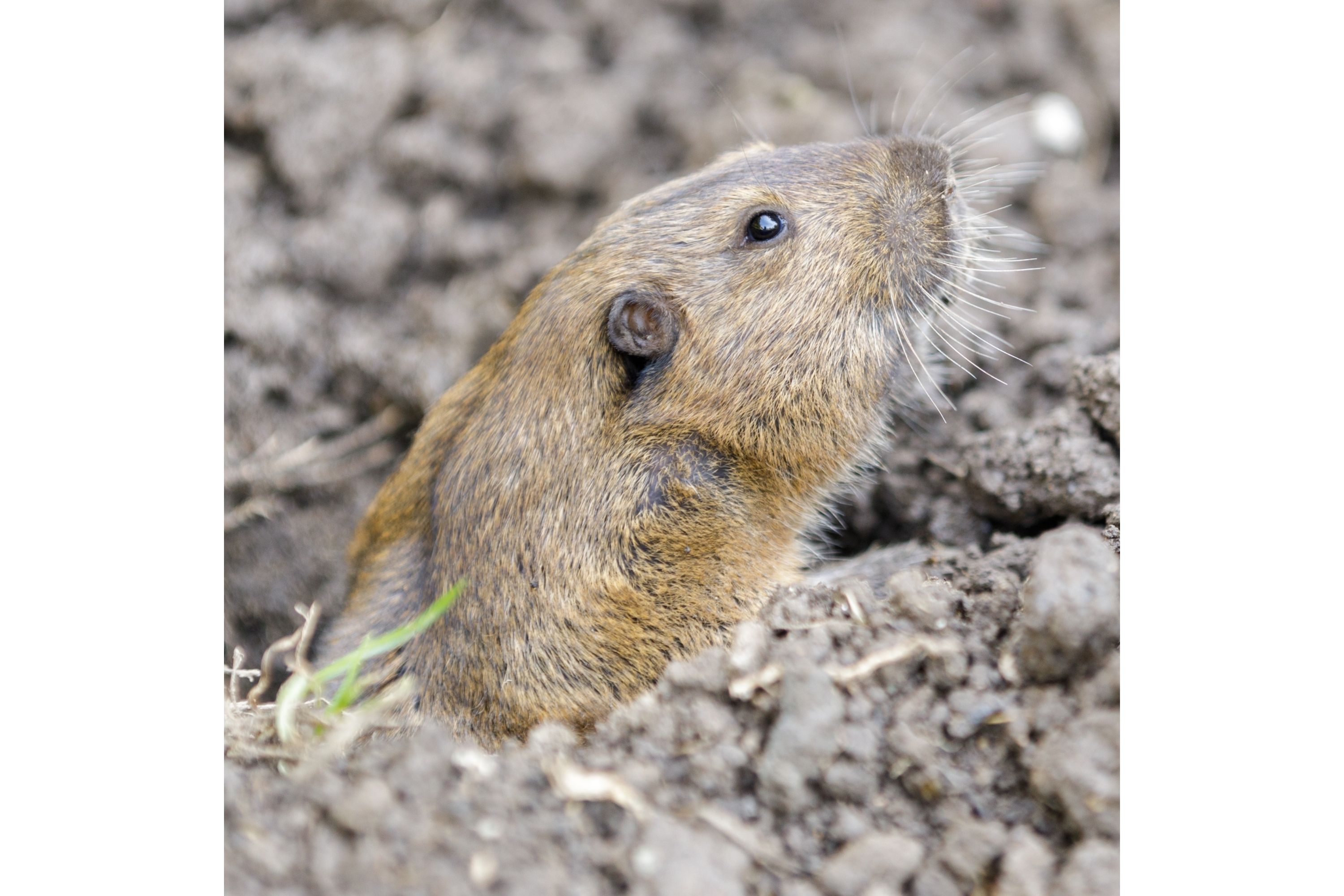Plains pocket gopher
(Geomys bursarius)

Description
The plains pocket gopher (Geomys bursarius) is one of 35 species of pocket gophers, so named in reference to their externally located, fur-lined cheek pouches. They are burrowing animals, found in grasslands and agricultural land across the Great Plains of North America, from Manitoba to Texas. Pocket gophers are the most highly fossorial rodents found in North America. G. bursarius has short fur with brown to black coloration over the upper body and lighter brown or tan fur on the underparts. Whitish hairs cover the tops of the feet, while the short, tapered tail is nearly naked. Fossorial adaptations include small eyes, short, naked ears, and large fore feet with heavy claws. Zygomatic arches are widely flared, providing ample room for muscle attachment, although, unlike other pocket gophers, this species does not use the curved incisors to assist the feet in digging. The external cheek pouches, which distinguish this family from other mammals, can be turned inside-out for grooming purposes. They are used for carrying food up to 7 cm (2.8 in) in length and have a forward opening. Other adaptations to a fossorial lifestyle include a low resting metabolic rate of 0.946 ml O2/g/h, and high conductance, a tolerance for low oxygen levels and high carbon dioxide levels, and a decreased water intake. Males are significantly larger than females, with a total body length of 25 to 35 cm (9.8 to 13.8 in), compared with 21 to 32 cm (8.3 to 12.6 in) in females. The tail is short and hairless, reaching 5 to 11 cm (2.0 to 4.3 in) in length, and only marginally longer in males. Adults males weigh from 230 to 473 g (8.1 to 16.7 oz) and females 128 to 380 g (4.5 to 13.4 oz). Plains pocket gophers prefer deep, sandy, friable soils to facilitate their burrowing lifestyle and their herbivorous diet of plant roots. The local vegetation is less significant than the nature of the soil, and the gophers are found in prairie grasslands, agricultural land, and even urban areas. A long-term controlled study of tunnel excavation by plains pocket gophers found that the rate of tunnel construction ranges from a high of 2,059 cm/week of new tunnels to a low of none over several weeks during the summer. About 30 to 50 m (98 to 164 ft) of tunnels were open at any one time. Factors affecting the size of the tunnel system appeared to be influenced more by the amount of energy needed to maintain and patrol it rather than the amount of vegetation present.
Taxonomic tree:







